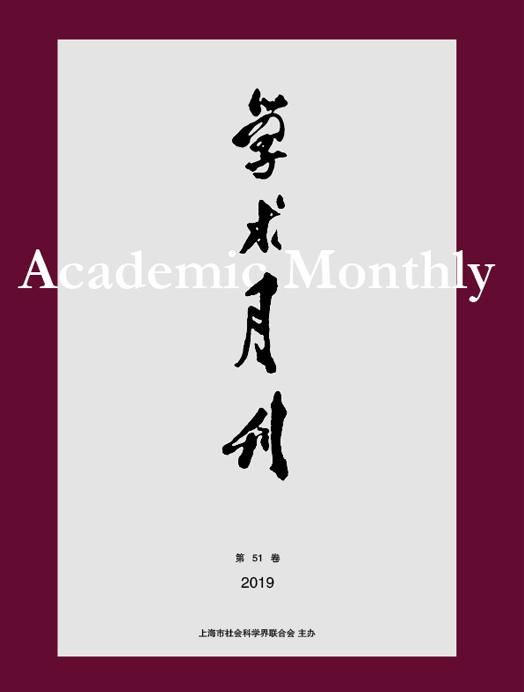Citation:
Pengfei SHENG and Simei ZHU. The Theory and Approach of Stable Isotope Analysis for Past Diets and Its Application to Historical Research[J]. Academic Monthly, 2022, 54(9): 201-211.

The Theory and Approach of Stable Isotope Analysis for Past Diets and Its Application to Historical Research
-
Abstract
Stable isotope analysis of paleo-diets of humans and animals is a new archaeological tool that uses scientific methods derived from the fields of geochemistry and ecology to analyse human and animal remains from sites to reconstruct their dietary and subsistence practice in the past. After nearly 40 years of development in China, stable isotope analysis has largely clarified the changing dietary patterns of prehistoric populations in early China. In the last decade, scholars have carried out many isotopic analyses of human and animal bone samples from the historical period, and have made new breakthroughs in five areas that deserve attention: the rise and fall of wheat/rice agriculture and millet farming in northern China, the collection and management of empire ritual animals, the interaction and reorganization of agricultural and pastoral populations, the lifeways of women and children, and the reconstruction of individual daily life history. In the future, the deep integration of history, archaeology and stable isotope analysis will provide further insights into the past, present and future of humanity from the perspective of dietary lifestyles.
-

-
References
-
Access
-
-
[1]
Wenjiao YANG
, Jin SUN
, Jianxin GUO
, Chuanchao WANG
. The Origin and Dispersal of Indo-European Languages from the Perspectives of Linguistics, Archeology and Genetics. Academic Monthly,
2021, 53(5): 175-185.
-
[2]
Jian XU
. Rethinking Triangle-rimed Animal-motif Mirrors: From Antiquarianism, Material History to Historical Archaeology. Academic Monthly,
2022, 54(3): 193-200.
-
[3]
Tangfa CHEN
. Media Culture: Life style of Category of Ethics or Right. Academic Monthly,
2019, 51(12): 151-158, 179.
-
[4]
ZHANG Shuping
. . Academic Monthly,
2018, 50(9): 110-120.
-
[5]
Jianxue XIONG
. Records in Skeletal Remians: Human Osteoarchaeology and the Restoration of Social Life History. Academic Monthly,
2022, 54(9): 183-191.
-
[6]
Shaoqing WEN
, Panxin DU
. Paleogenomics and Its Application in Human History Research. Academic Monthly,
2022, 54(10): 176-188.
-
[7]
. . Academic Monthly,
2017, 49(10): 162-177.
-
[8]
Defeng WANG
, Minqi ZHANG
. On the Non-Historical Nature of Economics. Academic Monthly,
2021, 53(7): 22-35.
-
[9]
Haifeng JING
. Historical Nature of Hermeneutics and Origin of Confucian Classics. Academic Monthly,
2021, 53(4): 21-31.
-
[10]
Taihui GUO
. Sources of Methodological Differentiation Within Historical Sociology. Academic Monthly,
2019, 51(12): 81-94.
-
[11]
. . Academic Monthly,
2016, 48(09): 15-16.
-
[12]
Yibing ZHANG
, Fugong ZHANG
, Weiyu KONG
, Ting WU
. Economic Discourse and the Formation of Historical Materialism (Symposium). Academic Monthly,
2022, 54(6): 5-10.
-
[13]
Chusheng YE
, Zhaoke REN
. The Network Analysis in Economics and the Economic Research of the Network. Academic Monthly,
2019, 51(5): 39-46, 38.
-
[14]
Ye’an ZHOU
, Haiyan ZHANG
. The Evolution of Behavioral Economics over Half a Century: The Historical Trajectory of Paradigm Shift. Academic Monthly,
2023, 55(4): 91-99.
-
[15]
DING Weixiang
. “Promoting Virtue” and “Following Knowledge”: The Historical Influence and Significance of the Debate between Zhu Xi and Lu Xiangshan. Academic Monthly,
2023, 55(7): 14-22.
-
[16]
NING Zhenjiang
. . Academic Monthly,
2018, 50(6): 121-132.
-
[17]
. . Academic Monthly,
2016, 48(03): 128-137.
-
[18]
XIE Yue
. The China’s Path to State Transformation: A Comparative Historical Analysis. Academic Monthly,
2023, 55(12): 62-72.
-
[19]
. . Academic Monthly,
2018, 50(02): 29-47.
-
[20]
. . Academic Monthly,
2016, 48(10): 109-122.
-
-



 沪公网安备 31010102003103号
沪公网安备 31010102003103号 DownLoad:
DownLoad: